Bromoxynil
- CAS NO.:1689-84-5
- Empirical Formula: C7H3Br2NO
- Molecular Weight: 276.91
- MDL number: MFCD00002153
- EINECS: 216-882-7
- SAFETY DATA SHEET (SDS)
- Update Date: 2024-12-18 14:08:52
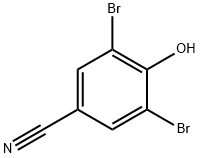
What is Bromoxynil?
Chemical properties
Off-white to salmon crystalline powder
Chemical properties
Bromoxynil is a colorless to white crystalline solid or tan powder. Odorless (pure).
The Uses of Bromoxynil
Bromoxynil is a nitrile herbicide. Bromoxynil is effective in post-emergent control of broad leaf weeds in cereal, corn, sorghum, onions, flax, mint, turf, and on non-cropland.
The Uses of Bromoxynil
Selective contact foliage-applied herbicide used to control many broad-leaved weeds in cereals.
Definition
ChEBI: A dibromobenzene that is 2,6-dibromophenol substituted by a cyano group at position 4.
General Description
Colorless solid. Melting point 382-384°F (194-195°C). Sublimes at 275°F (135°C) under pressure of 0.15 mm Hg. Used as a herbicide.
Reactivity Profile
Bromoxynil is a weak acid.
Hazard
Toxic.
Agricultural Uses
Herbicide: A U.S. EPA restricted Use Pesticide (RUP). For post-emergent control of broadleaf weeds. Used on alfalfa, garlic, corn, sorghum, flax, cereals, turf and on pasture and rangelands.
Trade name
BRIOTRIL®; BRUCIL®; BRITTOX®; BROMINAL®; BROMINEX®; BROMINAL®; BROMINAL ME-4®; BROMINIL®; BROMILIL PLUS®; Bromox 2E; BROMOTRIL®; BROMOXYNIL NITRILE HERBICIDE®; BRONATE®; BROXYNIL®; BUCTRIL® Bromoxynil; BUCTRIL® GEL HERBICIDE (octanoate); BUCTRIL® 4EC GEL (mixture of bromoxynil octanoate + bromoxynil heptanoate); BUCTRIL INDUSTRIAL®; CHIPCO BUCTRIL®; CHIPCO CRAB-KLEEN®; FLAGON®, 400 EC; HOBANE®; LABUCTRIL®; LITAROL®; M&B 10064®; MB 10064®; MB 10731® (octanoate); M&B 10731®; ME4 BROMINAL®; MERIT®; MEXTROL-BIOX®; MOXY 2E®; NCR CE EE DOV7® (octanoate); NU-LAWN WEEDER®; OXYTRIL M®; PARDNER®; SABRE®; TORCH®
Potential Exposure
Bromoxynil is a hydroxybenzonitrile herbicide used for postemergent control of broadleaf weeds; on alfalfa, garlic, corn, sorghum, flax, cereals, turf and on pasture and rangelands. A United States Environmental Protection Agency RUP.
Environmental Fate
Biological. Duke et al. (1991) reported that bromoxynil can be converted to 3,5-
dibromo-4-hydroxybenzoic acid by a microbial nitrolase.
Soil. In soils, Klebsiella pneumoniae metabolized bromoxynil to 3,5-dibromo-4-
hydroxybenzoic acid and ammonia (McBride et al., 1986). In soil, bromoxynil undergoes
nitrile and then amide hydrolysis yielding 3,5-dibromo-4-hydroxybenzoic acid and
Nitrification in soils is inhibited when bromacil is applied at a concentration of <50
ppm (Debona and Audus, 1970). The half-life in soil is approximately 10 days (Hartley
and Kidd, 1987).
Plant. In plants, the cyano group is hydrolyzed to an amido group which is subsequently
oxidized to a carboxylic acid. Hydrolyzes to hydroxybenzoic acid (Hartley and Kidd,
1987). In plants, bromoxynil may hydrolyze to a benzoic acid (Humburg et al., 1989).
Bromoxynil-resistant cotton was recently developed by inserting a bxn gene cloned from
the soil bacterium Klebsiella ozaenae. This gene, which encodes a specific nitrolase,
converted bromoxynil to its primary metabolite 3,5-dibromo-4-hydroxybenzoic acid
(Stalker et al., 1988).
Chemical/Physical. Emits toxic fumes of nitrogen oxides and bromine when heated
to decomposition (Sax and Lewis, 1987). Reacts with bases forming water-soluble salts
(Worthing and Hance, 1991). Bromacil is stable to UV light (Hartley and Kidd, 19
Shipping
UN2588 Pesticides, solid, toxic, Hazard Class: 6.1; Labels: 6.1—Poisonous materials, Technical Name Required.
Incompatibilities
A weak acid; keep away from bases and alkalies. React with boranes, alkalies, aliphatic amines, amides, nitric acid, sulfuric acid. Keep away from oxidizers (chlorates, nitrates, peroxides, permanganates, perchlorates, chlorine, bromine, fluorine, etc.) and strong acids.
Waste Disposal
Do not discharge into drains or sewers. Dispose of waste material as hazardous waste using a licensed disposal contractor to an approved landfill. Incineration with effluent gas scrubbing is recommended. Consult with environmental regulatory agencies for guidance on acceptable disposal practices. If allowed, Incineration with effluent gas scrubbing is recommended. Containers must be disposed of properly by following package label directions or by contacting your local or federal environmental control agency, or by contacting your regional EPA office.
Properties of Bromoxynil
| Melting point: | 189-191 °C(lit.) |
| Boiling point: | 265.6±40.0 °C(Predicted) |
| Density | 2.0926 (rough estimate) |
| refractive index | 1.6400 (estimate) |
| storage temp. | 0-6°C |
| solubility | DMSO (Slightly), Methanol (Slightly) |
| pka | 4.06(at 25℃) |
| form | Solid |
| color | Buff, Creamy |
| Water Solubility | 0.13 G/L (25 ºC) |
| Merck | 13,1426 |
| BRN | 2364039 |
| CAS DataBase Reference | 1689-84-5(CAS DataBase Reference) |
| NIST Chemistry Reference | Benzonitrile, 3,5-dibromo-4-hydroxy-(1689-84-5) |
| EPA Substance Registry System | Bromoxynil (1689-84-5) |
Safety information for Bromoxynil
| Signal word | Danger |
| Pictogram(s) |
 Skull and Crossbones Acute Toxicity GHS06  Health Hazard GHS08  Environment GHS09 |
| GHS Hazard Statements |
H301:Acute toxicity,oral H317:Sensitisation, Skin H330:Acute toxicity,inhalation H410:Hazardous to the aquatic environment, long-term hazard |
| Precautionary Statement Codes |
P202:Do not handle until all safety precautions have been read and understood. P260:Do not breathe dust/fume/gas/mist/vapours/spray. P273:Avoid release to the environment. P280:Wear protective gloves/protective clothing/eye protection/face protection. P302+P352:IF ON SKIN: wash with plenty of soap and water. |
Computed Descriptors for Bromoxynil
Bromoxynil manufacturer
BASR Fine Chemicals Pvt. Ltd.
New Products
(S)-3-Aminobutanenitrile hydrochloride 4-Methylphenylacetic acid N-Boc-D-alaninol N-BOC-D/L-ALANINOL Tert-butyl bis(2-chloroethyl)carbamate 3-Morpholino-1-(4-nitrophenyl)-5,6-dihydropyridin- 2(1H)-one Furan-2,5-Dicarboxylic Acid Tropic acid 1-Bromo-3,5-Di-Tert-Butylbenzene S-2-CHLORO PROPIONIC ACID ETHYL ISOCYANOACETATE 2-Bromo-1,3-Bis(Dimethylamino)Trimethinium Hexafluorophosphate 4-IODO BENZOIC ACID 3-NITRO-2-METHYL ANILINE 1-(2,4-DICHLOROPHENYL) ETHANAMINE (2-Hydroxyphenyl)acetonitrile 4-Bromopyrazole 2-(Cyanocyclohexyl)acetic acid 4-methoxy-3,5-dinitropyridine 1-(4-(aminomethyl)benzyl)urea hydrochloride 2-aminopropyl benzoate hydrochloride diethyl 2-(2-((tertbutoxycarbonyl)amino) ethyl)malonate tert-butyl 4- (ureidomethyl)benzylcarbamate Ethyl-2-chloro((4-methoxyphenyl)hydrazono)acetateRelated products of tetrahydrofuran


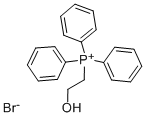


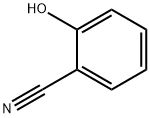
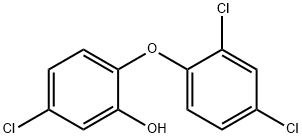
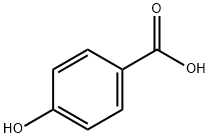
You may like
-
 Bromoxynil 1689-84-5 98%View Details
Bromoxynil 1689-84-5 98%View Details
1689-84-5 -
 Bromoxynil 98% CAS 1689-84-5View Details
Bromoxynil 98% CAS 1689-84-5View Details
1689-84-5 -
 Bromoxynil CAS 1689-84-5View Details
Bromoxynil CAS 1689-84-5View Details
1689-84-5 -
 Bromoxynil CAS 1689-84-5View Details
Bromoxynil CAS 1689-84-5View Details
1689-84-5 -
 1975-50-4 98%View Details
1975-50-4 98%View Details
1975-50-4 -
 2-HYDROXY BENZYL ALCOHOL 98%View Details
2-HYDROXY BENZYL ALCOHOL 98%View Details
90-01-7 -
 14714-50-2 (2-Hydroxyphenyl)acetonitrile 98+View Details
14714-50-2 (2-Hydroxyphenyl)acetonitrile 98+View Details
14714-50-2 -
 118753-70-1 98+View Details
118753-70-1 98+View Details
118753-70-1